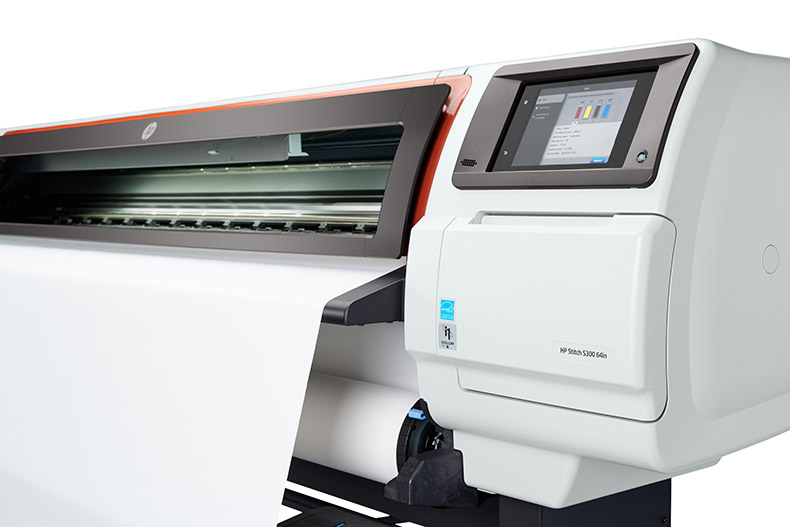
In the dynamic world of printing technology, sublimation printers have emerged as a revolutionary force, transforming the way businesses approach printing and customization. Sublimation printing, with its ability to produce vibrant, durable, and detailed images on a variety of surfaces, has gained significant traction across industries. However, navigating the realm of sublimation printing in a business context requires a deep understanding of the underlying principles and effective implementation of business rules. In this article, we will delve into the intricacies of sublimation printers and explore the essential business rules that govern their successful integration into various ventures.
Understanding Sublimation Printing:
Sublimation printing is a heat transfer process that involves the transformation of solid dye particles into gas under the influence of heat and pressure. This gas then permeates the surface of a substrate, such as fabric or ceramics, and solidifies, resulting in a high-quality, full-color image with excellent durability. Sublimation printers utilize this process to create intricate designs, photographs, and graphics on a wide range of materials.
Business Rule #1: Quality Control is Paramount
One of the cardinal rules in the sublimation printing business is maintaining a stringent quality control process. Achieving consistent and superior print quality is crucial for customer satisfaction and retention. Businesses must invest in high-quality sublimation printers, inks, and substrates to ensure that the final product meets or exceeds customer expectations. Regular maintenance of equipment and calibration of printers are essential to prevent color inconsistencies and image distortions.
Business Rule #2: Know Your Substrates
The versatility of sublimation printing lies in its ability to transfer images onto various substrates. However, not all materials are created equal, and each substrate requires a nuanced approach. Businesses must conduct thorough research to understand the compatibility of different substrates with sublimation printing. Whether it’s textiles, ceramics, metals, or plastics, knowing the intricacies of each material ensures optimal results and expands the range of products a business can offer.
Business Rule #3: Innovation and Customization
In a market saturated with generic products, businesses can stand out by embracing innovation and customization. Sublimation printing allows for highly detailed and personalized designs, enabling businesses to cater to niche markets and individual preferences. The ability to offer unique, one-of-a-kind products enhances customer loyalty and opens up new revenue streams. Implementing efficient customization processes and staying abreast of design trends are key components of this business rule.
Business Rule #4: Eco-Friendly Practices
Sustainability is no longer a buzzword but a fundamental consideration for businesses in the 21st century. Sublimation printing, with its minimal waste and energy-efficient process, aligns well with eco-friendly practices. Adhering to environmentally conscious methods, such as using recycled substrates and eco-friendly inks, not only contributes to corporate social responsibility but also resonates with an increasingly environmentally conscious consumer base.
Business Rule #5: Comprehensive Training for Staff
The success of any sublimation printing venture hinges on the proficiency of the personnel operating the equipment. Comprehensive training programs for staff members, covering the nuances of sublimation printing, equipment handling, and troubleshooting, are indispensable. A well-trained team not only ensures efficient production but also minimizes errors and reduces downtime, ultimately impacting the bottom line positively.
Business Rule #6: Pricing Strategies and Market Positioning
Effective pricing strategies are vital in a competitive market. Businesses must carefully calculate production costs, including equipment, inks, substrates, and labor, to establish competitive yet profitable pricing. Moreover, understanding the target market and positioning the business appropriately is crucial. Whether focusing on high-end, premium products or catering to the mass market, aligning pricing with perceived value is a strategic business rule that determines success.
Business Rule #7: Digital Marketing and Online Presence
In the digital age, an online presence is non-negotiable. Utilizing digital marketing strategies, such as social media promotion, search engine optimization (SEO), and e-commerce platforms, can significantly expand the reach of a sublimation printing business. Engaging with customers through online channels, showcasing products, and providing a seamless purchasing experience contribute to brand visibility and customer acquisition.
Business Rule #8: Legal Compliance and Intellectual Property
Navigating the legal landscape is crucial in the sublimation printing business, where intellectual property and copyright issues are prevalent. Businesses must ensure that they have the right to reproduce and print images on various substrates. Implementing robust legal compliance measures and obtaining proper licenses for copyrighted material safeguard the business from legal repercussions and build a trustworthy reputation.
Conclusion:
The realm of Sublimation Printer – Business Rules to thrive in a competitive market. However, success in this domain hinges on a strategic approach guided by essential business rules. From prioritizing quality control and understanding substrates to embracing innovation, customization, and sustainable practices, these rules form the blueprint for a successful sublimation printing venture. By incorporating these principles into their operations, businesses can navigate the complexities of the sublimation printing landscape and carve a niche for themselves in the ever-evolving world of printing technology.








